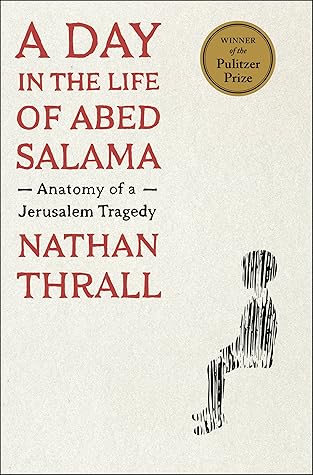More on this book
Community
Kindle Notes & Highlights
Read between
January 7 - January 10, 2024
It opened her eyes to a hidden universe of suffering that touched nearly every Palestinian home. A little over a year after Hadi’s release, a UN report found that some 700,000 Palestinians had been arrested since the occupation began, equal to roughly 40 percent of all the men and boys in the territories. The damage wasn’t only to the affected families, each of them grieving lost years and lost childhoods. It was to the entire society, to every mother, father, and grandparent, all of whom knew or would come to learn that they were powerless to protect their children.
Just seven weeks before the accident, Israel’s High Court of Justice had ruled on the legality of the settler quarries in the West Bank. International law prohibits an occupying power from plundering the resources of the occupied. Pillage is a war crime. But the court ruled unanimously that the state was permitted to exploit the West Bank’s natural resources. The reason given by its president, Dorit Beinisch, who was considered a liberal justice in Israel, was that the occupation was so long-standing that it required the “adjustment of the law to the reality on the ground.”
If the theme of Oslo was segregation, its symbols were the barriers that Dany built: checkpoints, roadblocks, bypass roads, and, above all, fences and walls. In 1994, the year the PA was established, Israel put a fence around Gaza and laid the foundation for what would later become the separation barrier, building the first walls in the West Bank.
It was an irony of Oslo that those most vehemently opposed to it—Jewish and Palestinian attackers—did the most to further the process of segmentation at its core.
“As long as there is occupation, there will be a resistance,” a Hamas political leader declared. “So we say it clearly: Occupation should be stopped and then there will be something else.”
Although settling the West Bank had been Israel’s primary national project for decades, supported by every Israeli government, whether center-left or right, Ibrahim’s friends in the IDF claimed that the policy was really an aberration, driven by a small group of religious fanatics who were not representative of the state. Ibrahim believed them.
In many ways, the Adam settlement was typical: it sat on a hilltop, claimed a historic connection to a biblical site, occupied confiscated Palestinian land, inserted a wedge between Palestinian villages, had been established with the support of the Israeli government and the taxpayer-funded World Zionist Organization, and offered more affordable homes than could be found inside the Green Line—spacious single-family villas with yards and bucolic views. But in one way, Adam was unique among the settlements: it had been created by poor Mizrahi Jews, immigrants from the Middle East and North
...more
Israel placed the Mizrahim in ma’abarot, densely packed transit camps where they slept in tents. The camps were fenced-in and guarded by police, who prevented the immigrants from leaving. They lacked running water, adequate sanitation, and trained teachers for the children. Israel’s Ashkenazi elite treated the Mizrahim with contempt. Eleven of the twelve ministers in the first Israeli government were Ashkenazi immigrants. At a cabinet meeting, Prime Minister David Ben-Gurion proposed building outhouses for the Mizrahim instead of bathrooms. “These people do not know how to make hygienic use of
...more
This highlight has been truncated due to consecutive passage length restrictions.
The priority was to go deep into the West Bank, using a military strategy of setting up an outpost at the edge of enemy territory and then solidifying control over the area leading up to it.
family. The more than 100,000 people in the areas of Shuafat Camp and Kufr Aqab, who had previously received services from Jerusalem, were left without local ambulances, fire trucks, and police. There wasn’t a single ATM in Shuafat Camp and its adjacent neighborhoods. Only Israel’s army and Border Police entered them regularly, usually in armored vehicles, carrying assault rifles, and wearing helmets and body armor.


